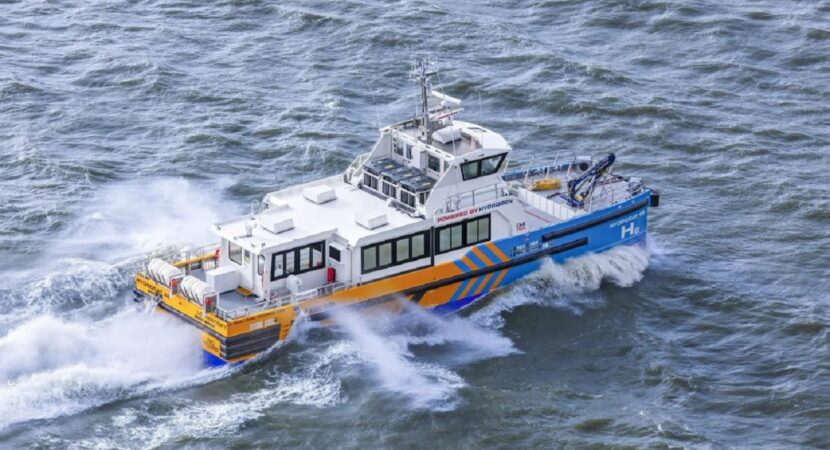
Vestas' green hydrogen powered ship aims to reduce a high amount of CO₂ released into the atmosphere throughout its offshore operations capable of changing the scenario of the shipping industry.
Vestas has launched a project to see how the world's first crew transfer (CTV) vessel powered by green hydrogen can contribute to reducing carbon emissions during its offshore operations. This project was developed in partnership with Windcat Workboats, owner of the largest global fleet of ships and vessels carrying out offshore operations.
Learn about the first crew transfer ship
CTV is solution powered dual fuel (in English: bi-fuel vehicle is one that can run on two fuels) powered by hydrogen together with marine diesel. O fuel hydrogen does not contain carbon, showing that it has the potential to significantly reduce carbon dioxide (CO₂) emissions, with excellence.
This solution will be launched on July 15th of this year and is part of a pilot program at the Norther wind farm in the Belgian North Sea. Running through the end of this year, the program aims to provide the opportunity for Vestas to explore the most scalable approaches to incorporating this hydrocarbon within the settings of its offshore operations.
The main objective of the test will be to obtain sufficient information about the opportunities and limitations of ships powered by green hydrogen in daily operations.
Hydrogen-powered ship developed by Vestas could be the solution for reducing carbon dioxide (CO₂) emissions in offshore operations
According to Christian Venderby, Executive Vice President of Services at Vestas, areas that are difficult to decarbonize, such as the maritime transport, will be what he called the “final frontier” on the world’s journey towards decarbonization.
Venderby further highlights that green hydrogen is a key technology that Vestas can advance along this path, which is why Vestas is looking forward to starting testing its own potential to reduce emissions from our offshore operations, namely testing its new hydrogen-powered vessel.
The Vice President of Vestas also spoke about the broader application of decarbonisation technologies so that progress can indeed be made with the support of maritime industry leaders, ending his speech by emphasizing that this is why Vestas is so proud to lead this project.
Potential of the ship powered by hydrogen
CO₂ emissions, commonly associated with offshore operations, currently account for around 1/3 of Vestas' scope 1 and 2 emissions. Due to this fact, it is necessary to deploy ships powered by hydrogen, to continue the sustainability journey of the Vestas.
The new CTV model has the potential to stop releasing around 158 tons of CO₂ into the atmosphere, an estimated reduction of 37% compared to what is observed from a conventional ship. These savings will be validated throughout the pilot, exploring how the solution can be scaled up if it proves to have an impact on Vestas Scope 1 and 2 broadcasts.
These days, Vestas' ship is being reconfigured to be fueled primarily by gray hydrogen, due to the fact that its green variant is not available in the quantities needed for production.
Through testing, Vestas hopes to mature a fixed path to green hydrogen in its offshore operations, which can be leveraged when it reaches the required maturity level.












